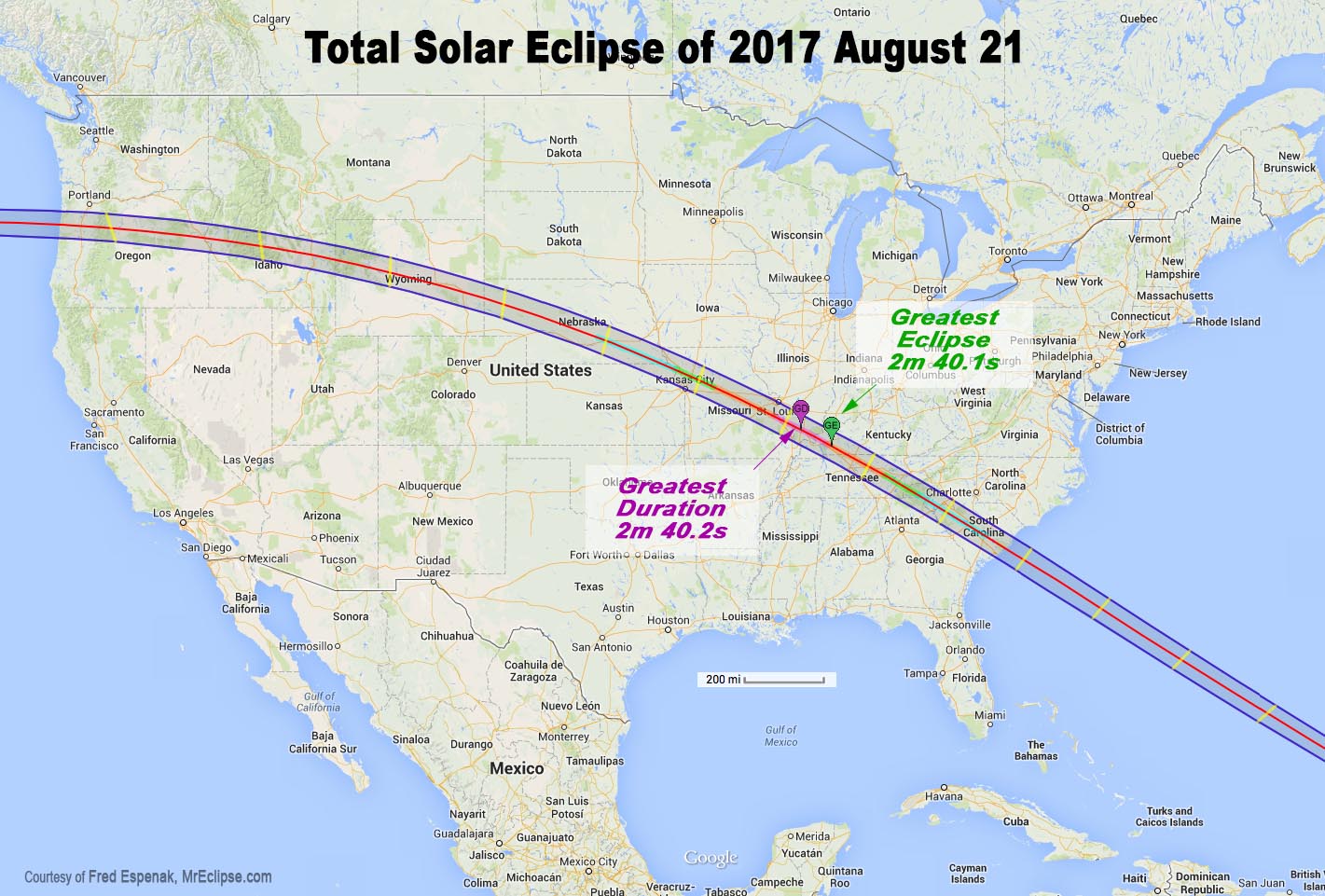While I am waiting on ANSYS to run some benchmarks, I wanted to take a moment to write about an event happening later this year. On a warm, summer day the air will grow chill, animals will go crazy, the sun and moon will darken, and stars will be visible even in the middle of the day! No, I’m not talking about the apocalypse: I am describing the total solar eclipse that will occur on August 21st, 2017. It is the first total solar eclipse that will cross the mainland United States in my lifetime, and the one that will come closest to where I live. Two more will happen within a timeframe I expect to live through, but the one in 2024 will only reach the south and eastern US – and the 2045 eclipse will be further south than the one this year, plus a lot can happen in the next three decades.
Being a nerd, science enthusiast, and sci-fi nut this is an event I am very excited about. My family will be taking a road trip to visit relatives who live in Wyoming, right in the path of totality. We are lucky in that respect, since hotels and campgrounds in and near totality are extremely expensive and probably all sold out by now. It occurs to me that this blog post, even a couple months in advance, may be too late to help a lot of folks… but even if you can’t find a place to stay in the path of totality, simply driving in on the day of the eclipse would be well worth your time. The path will cross all the way from coast to coast in the US, going through parts of Oregon, Idaho, Wyoming, Nebraska, Kansas, Missouri, Illinois, Kentucky, Tennessee, Georgia, and both North and South Carolina. Here is a map from NASA:

Even if you are not able to make it to the path of totality, you will still be able to see a partial eclipse anywhere in North America. In order to look at the partial eclipse (either outside the path or in the path before / after totality) you will need to have special glasses designed to filter out a huge amount of light. These make it safe to look at the sun, and they are pretty cheap – but I recommend ordering them ahead of time, in case they sell out. I got mine from Eclipse2017.org, and bulk packs are available for families or groups. If you want to take photos or videos of the eclipse, you will also need a solar filter for your camera. They are available in either film or glass varieties, and I plan to pick up one of the glass models from Seymour Solar in the next couple of weeks. My goal is to take a 4K video of the eclipse and grab still shots from that afterward, to avoid needing to try and time my pictures carefully – and so that I am not too distracted by a camera to enjoy the eclipse itself.
Here are some more details about how the eclipse works, plus links and videos with even more information:
Phases of a total solar eclipse
C1 – This is when the moon first starts to cover the edge of the sun
C2 – This is when the moon completely covers the disc of the sun, beginning totality. Make sure to take off your eclipse glasses at this point, so that you can see things properly!
C3 – This is when the moon starts to move away, uncovering the edge of the sun. Put your glasses back on!
C4 – This is the end of the eclipse, when the moon no longer obscures any part of the sun.
C1->C2 and C3->C4 will last over an hour each, if you are in the path of totality, with the total eclipse itself (C2->C3) lasting anywhere from a few seconds to over two minutes depending on how close to the center of the path you are. During the total eclipse you can see the sun’s corona, but the sky will be as dark as night and stars will be visible. Animals that use the sun to tell day vs night will be confused and start to act as if it is nighttime. Be sure to also look down at the horizon, at least briefly, since it will look like sunset for a full 360 degrees around you because sunlight is still reaching the earth outside of the moon’s shadow. There are also cool phenomenon to look for at different points like Baily’s beads, diamond rings, and shadow snakes. All in all, it should be an amazing and awe-inspiring event!
For more info about the eclipse, and what to be watching for, here is a video from one of my favorite YouTube channels – SmarterEveryDay:
Destin (who runs SED) also made a video about how to record the eclipse, which is what I will be using as a guide for my own efforts:
To help keep track of things during the eclipse, I am going to use a timer app developed by the gentleman being interviewed in those videos. It is available for both Android and iOS. Much more info about the eclipse, where and how to view it, and more can be found on numerous websites.
Hopefully this information is helpful to some folks, and encourages others to check out this phenomenon who might not have thought much of it before. If I am able to get a good video of the eclipse, as I hope to, I’ll post another blog as a follow-up in late August.
UPDATE: I forgot to come back and post a follow-up blog in 2017 about the eclipse, but I did get some decent videos: